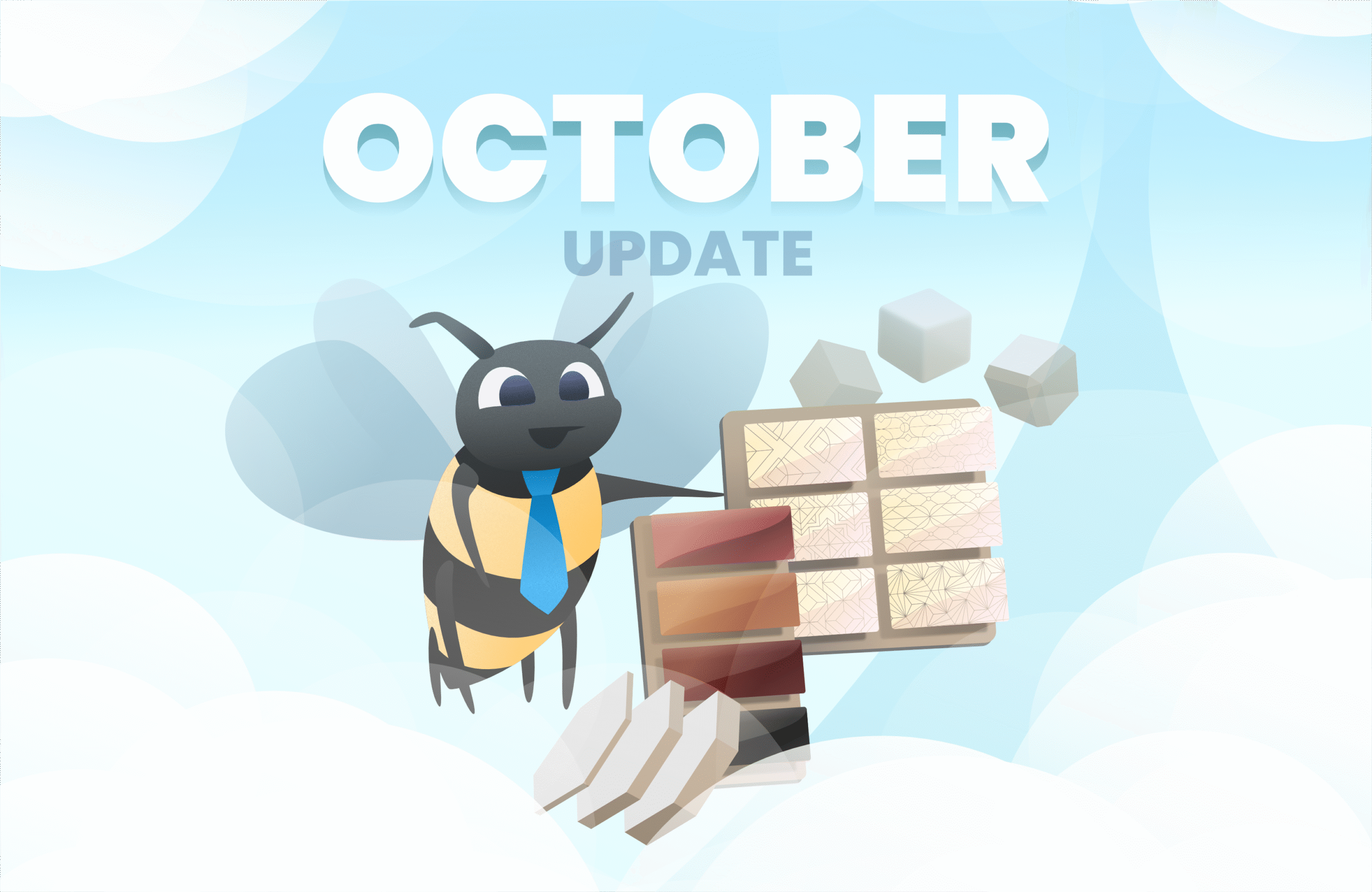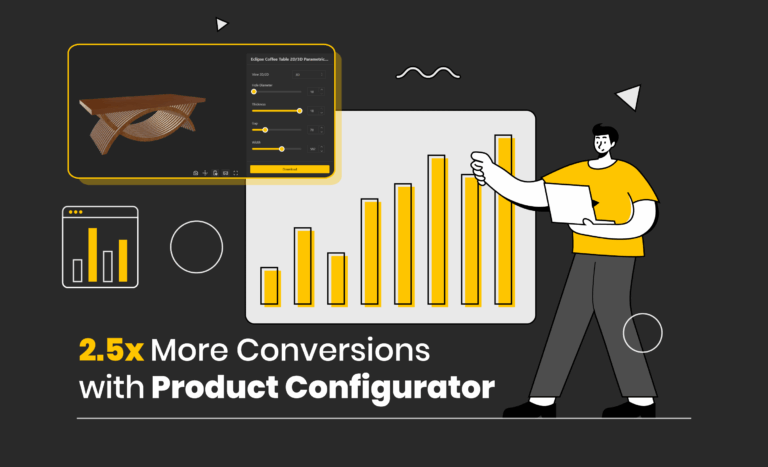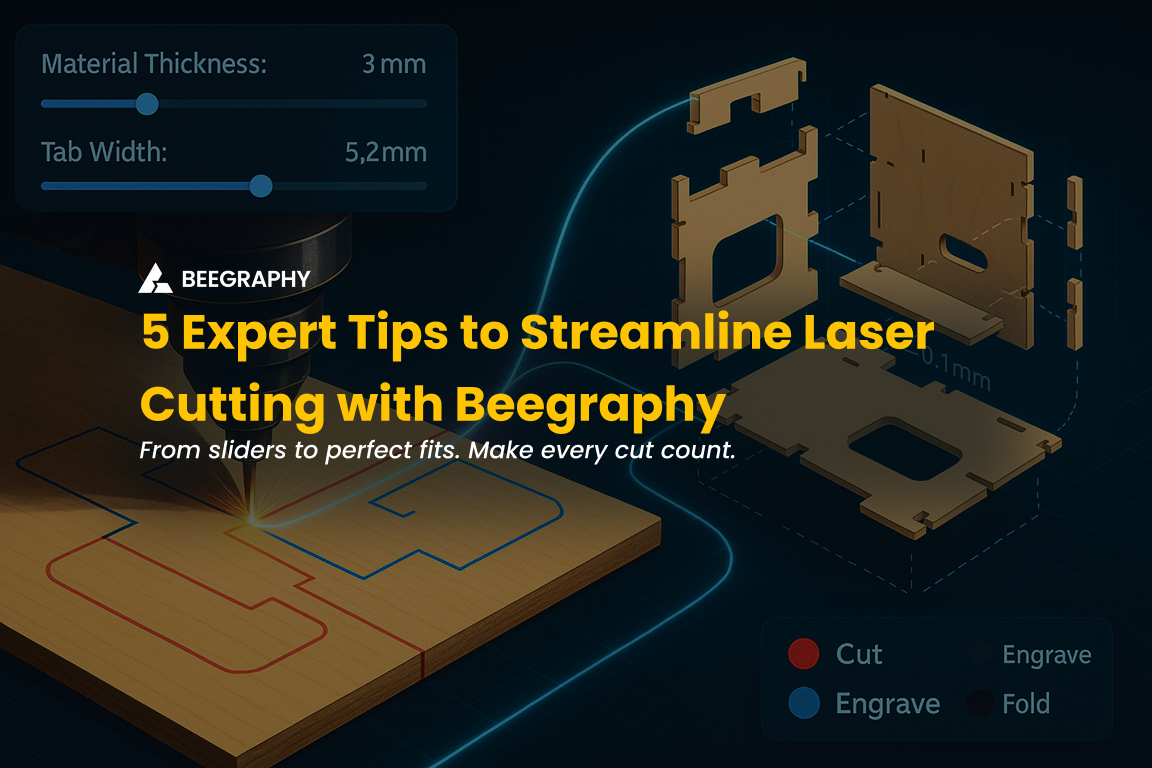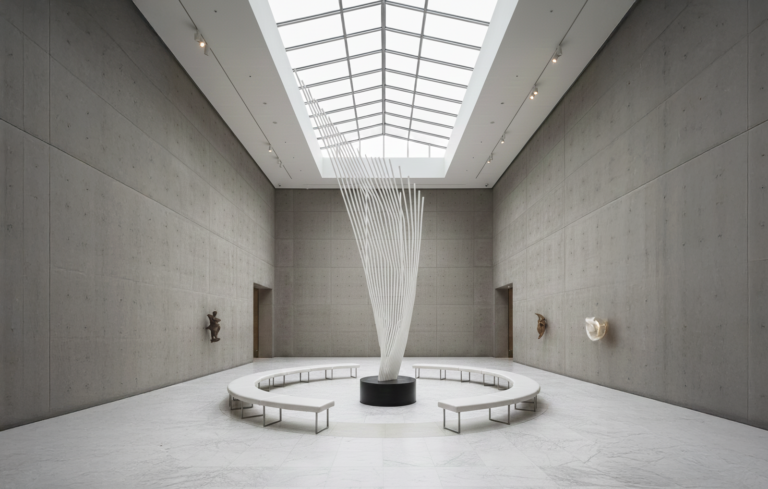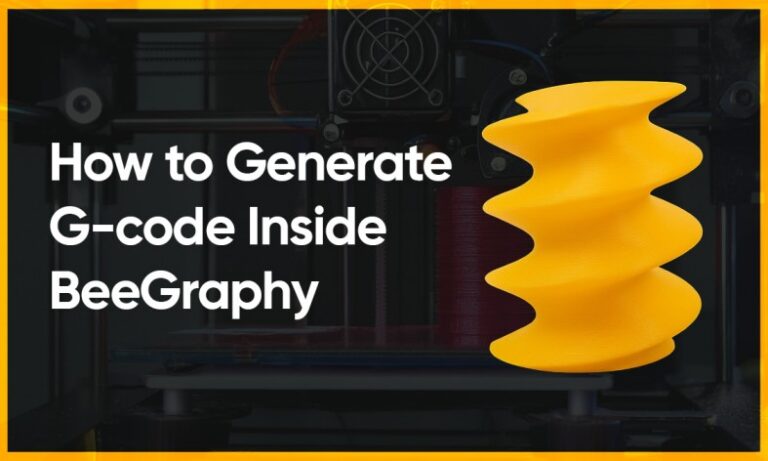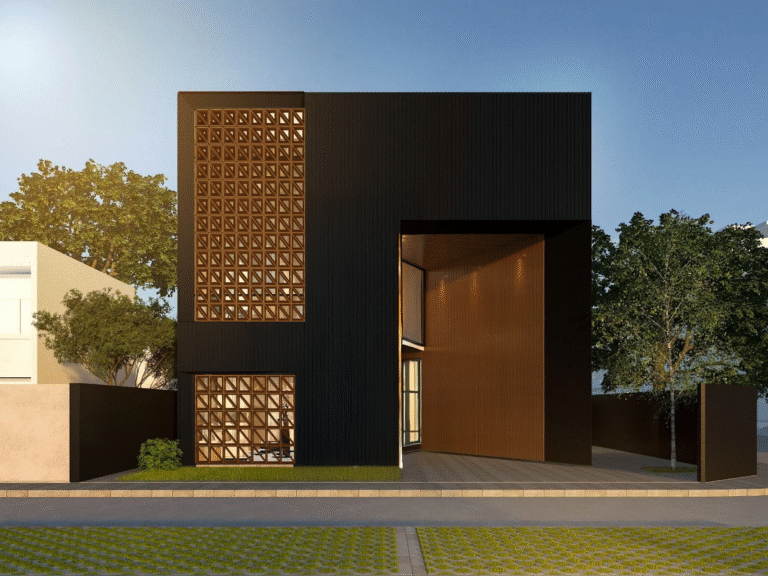Table of Contents
The latest BeeGraphy update introduces a major leap forward in how designers, developers, and fabricators interact within the BeeGraphy Interface. With community-driven plugin creation, enhanced geometry tools, and production-ready workflows, this release bridges design and manufacturing like never before.
From new geometry and material nodes that expand modeling precision, to data tree and service integrations that connect design logic with real-world production—every update is built to make computational design more intuitive, flexible, and fabrication-aware. Alongside these core additions, BeeGraphy also brings improved quotation tools, a refined user interface, and performance optimizations for faster, smoother operation across complex workflows.
Together, these updates strengthen BeeGraphy’s position as a complete design-to-production ecosystem, empowering users to create, analyze, and fabricate smarter than ever before.
BeeGraphy Core Node Updates
We have enhanced BeeGraphy’s core node system with a new range of geometry, curve, surface, and data nodes that elevate the depth and flexibility of parametric design. These updates introduce smoother modeling workflows, greater precision in form control, and more efficient data management
1. Voronoi Nodes
We’ve introduced two powerful geometry nodes. These additions expand the creative and computational capabilities of the platform – enabling more complex form generation, spatial exploration, and parametric modeling across architectural and design workflows.
- Populate Geometry: Efficiently distributes random or structured points across any input geometry. This node provides a quick way to seed locations for growth patterns, simulations, or procedural modeling — ensuring even, controllable distributions ideal for parametric exploration and fabrication workflows. Learn More…
Ideal for: point scattering, surface sampling, pattern generation, and seeding 3D processes like Voronoi or particle systems. - Voronoi 3D: Creates intricate volumetric partitions by dividing space based on proximity to input points. The result is a network of organic, cell-like structures that can be used for form-finding, architectural massing, or lightweight fabrication. Learn More…
Ideal for: lattice generation, cellular modeling, structural optimization, and volumetric studies in computational design.
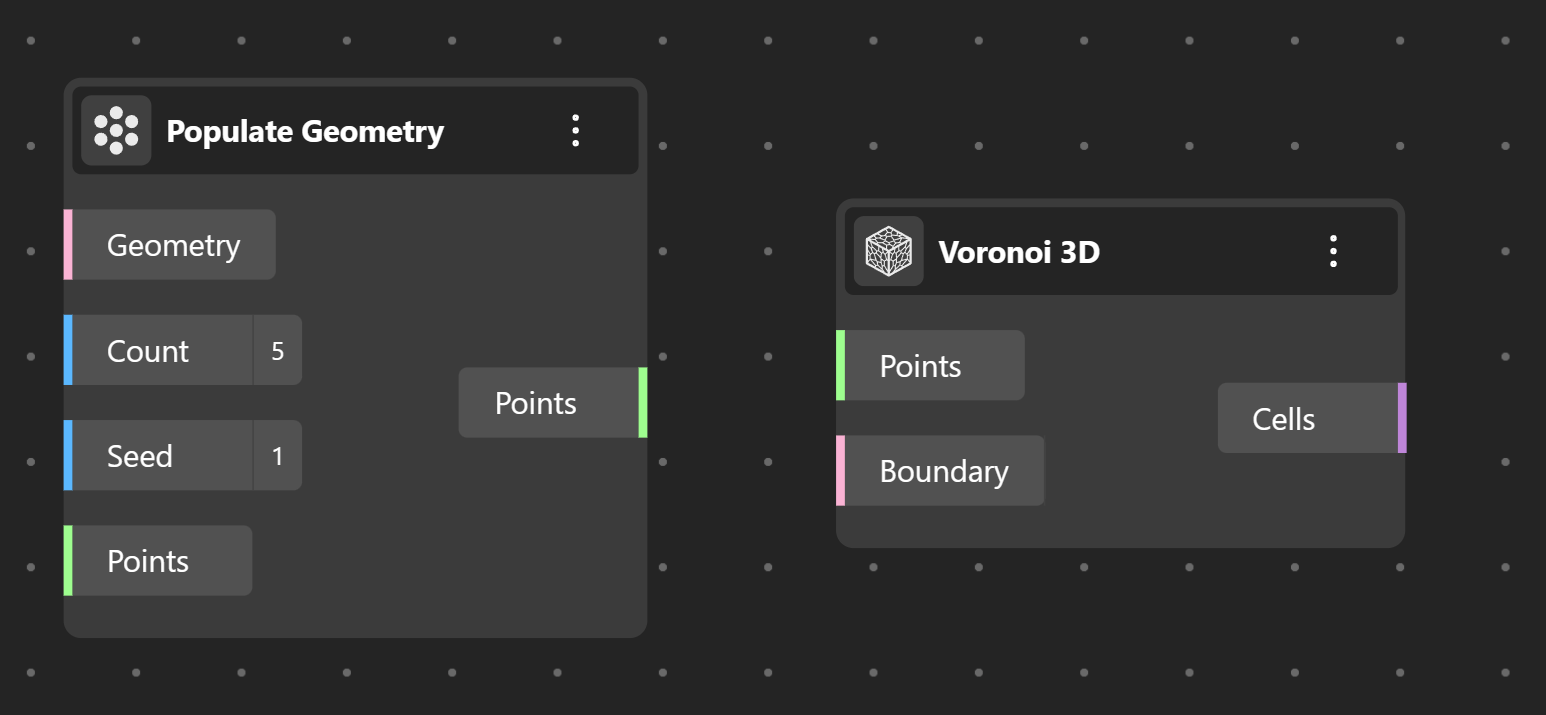
2. Edge Modifier Nodes
Another two new edge-modification, these tools give designers greater control over the finishing and detailing of 3D models—allowing smoother transitions, precise bevels, and refined surface treatments that elevate both the aesthetic and functional quality of geometry.
-
Fillet Edges Geometry: Smoothens sharp transitions by rounding selected edges of a 3D geometry. This node refines models with a controlled fillet radius, improving aesthetics, realism, and manufacturability. Learn More…
Ideal for: refining solid models, preparing parts for fabrication, and achieving softer, more organic surface transitions. -
Chamfer Geometry: Replaces sharp edges with flat beveled surfaces, providing a crisp yet functional edge treatment. Perfect for hard-surface modeling and clean, mechanical aesthetics where precision is key. Learn More…
Ideal for: mechanical design, product detailing, and preparing edge-safe geometry for visualization or fabrication.
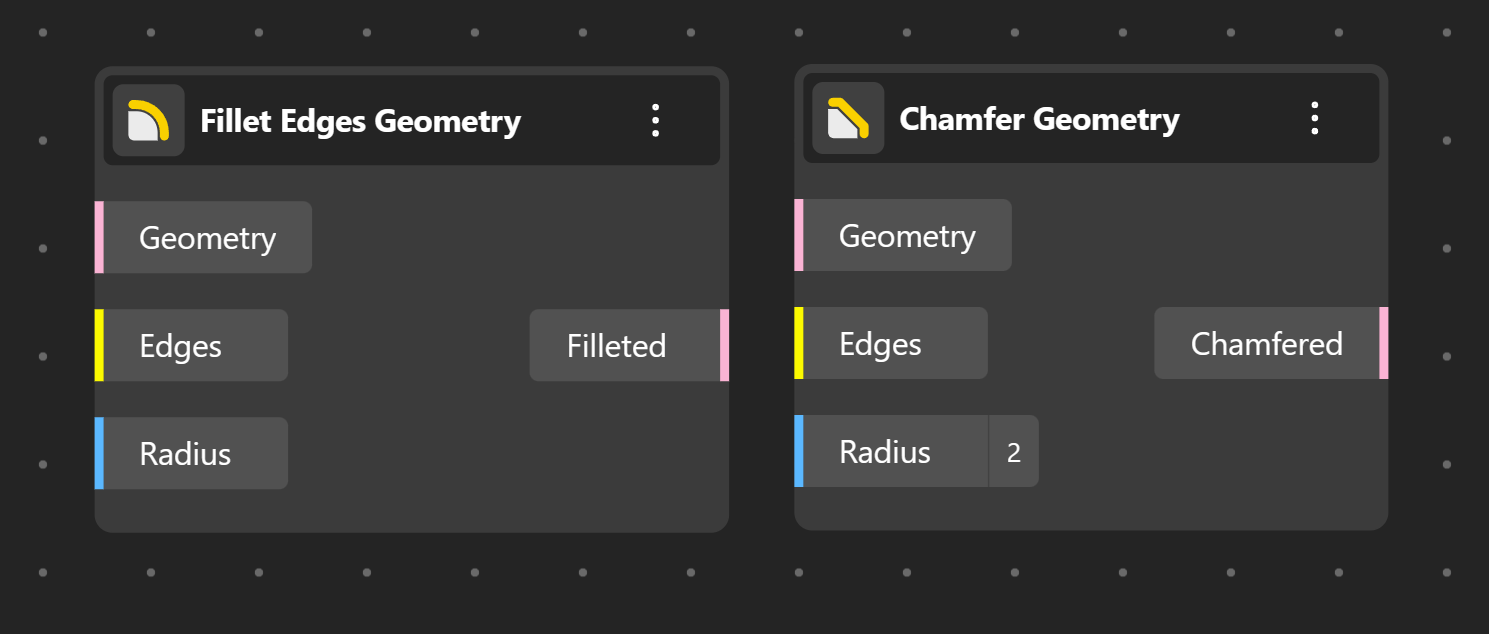
3. Curve and Surface Manipulation Nodes
We’ve added a new suite of curve and surface manipulation nodes. These tools provide designers with greater flexibility and analytical precision, perfect for refining geometries, mapping patterns, and exploring advanced surface behaviors within parametric workflows.
- Map to Surface: Projects or remaps curves from one surface domain to another, maintaining proportional relationships. Useful for adapting patterns, grids, or contours across complex topologies. Learn More…
- Extend Curve: Dynamically lengthens curves at their start or end, offering control over extension type and distance. A versatile tool for adjusting curve boundaries and creating continuous design flows. Learn More…
- Evaluate Surface: Samples any surface at given parameter coordinates to extract precise geometric data such as point, normal, and directional vectors. Enables deeper geometric analysis and responsive modeling. Learn More…
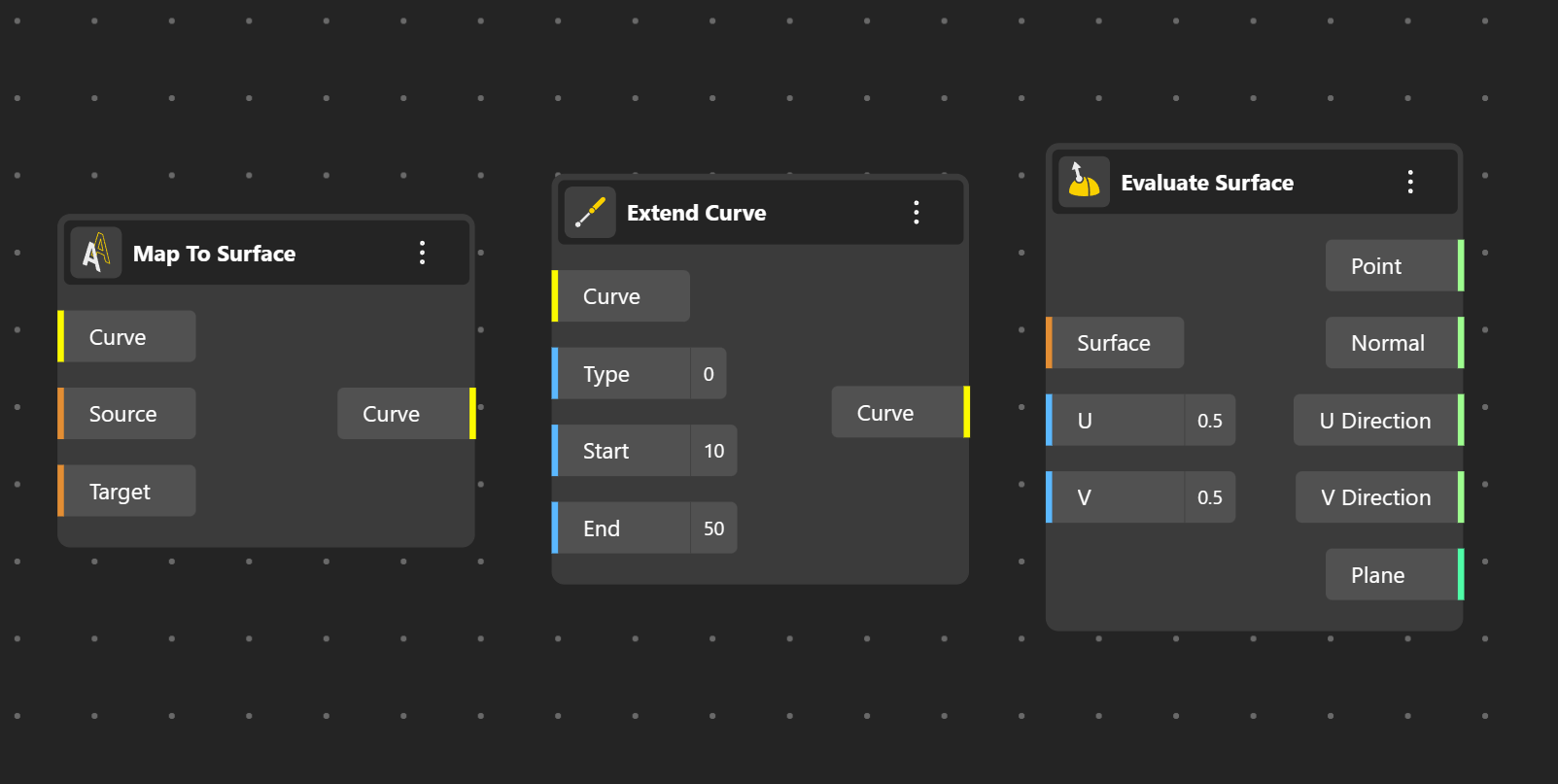
4. Data Tree Nodes: Structuring and Managing Complex Data Flows
Parametric modeling often involves intricate data hierarchies, and these Data Tree Nodes are designed to bring order, flexibility, and clarity to that complexity. They allow users to reorganize, merge, and manipulate structured data with precision.
- Path Mapper: Reorganizes and remaps data trees with complete control over branch and item structure. It lets users define custom patterns, transform hierarchies, and streamline how data flows through a definition. Learn More…
Ideal for: restructuring data trees, simplifying logic networks, and managing complex parametric relationships. - Entwine Tree: Merges multiple data streams into one unified tree while maintaining hierarchy and consistency. It’s a powerful tool for consolidating inputs from various sources into a clean, ordered dataset. Learn More…
Ideal for: combining lists, synchronizing multiple inputs, and building organized parametric systems.
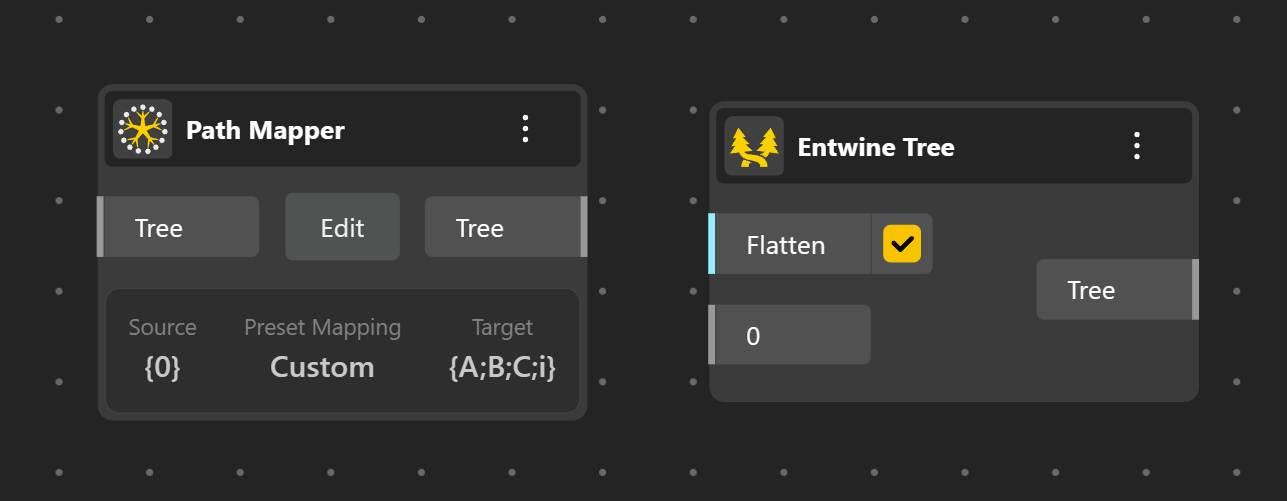
Business Updates: Streamlining Quotation and Communication Workflows
These updates bring enhanced control and automation to the BeeGraphy Dashboard, making quotation, service estimation, and client communication faster, smarter, and more transparent.
- Bill of Material: Automatically compiles all materials used in a design into a structured, quantifiable list. It extracts geometry-linked material data such as type, size, and quantity, making it the foundation for accurate cost estimation and inventory management.
- Bill of Service: Extends the BOM by calculating all associated service costs, such as machining, assembly, or cutting. It reflects both the scale of fabrication effort and the resources required, creating a complete pricing overview for any parametric model.
- PDF Download Functionality: Users can now generate and download professional quote summaries in PDF format directly from the dashboard, ensuring quick sharing and record-keeping.
- Request for Quote: A new option allows customers to submit quote requests seamlessly, streamlining communication between designers, fabricators, and clients.
- Automatic Email Delivery: When a customer email is added within the quote interface, the system now automatically sends the generated quote, improving speed and accuracy in client correspondence.
- Quote Revocation: Users can revoke or cancel quotes anytime through the dashboard, maintaining full control over pricing visibility and project negotiations.
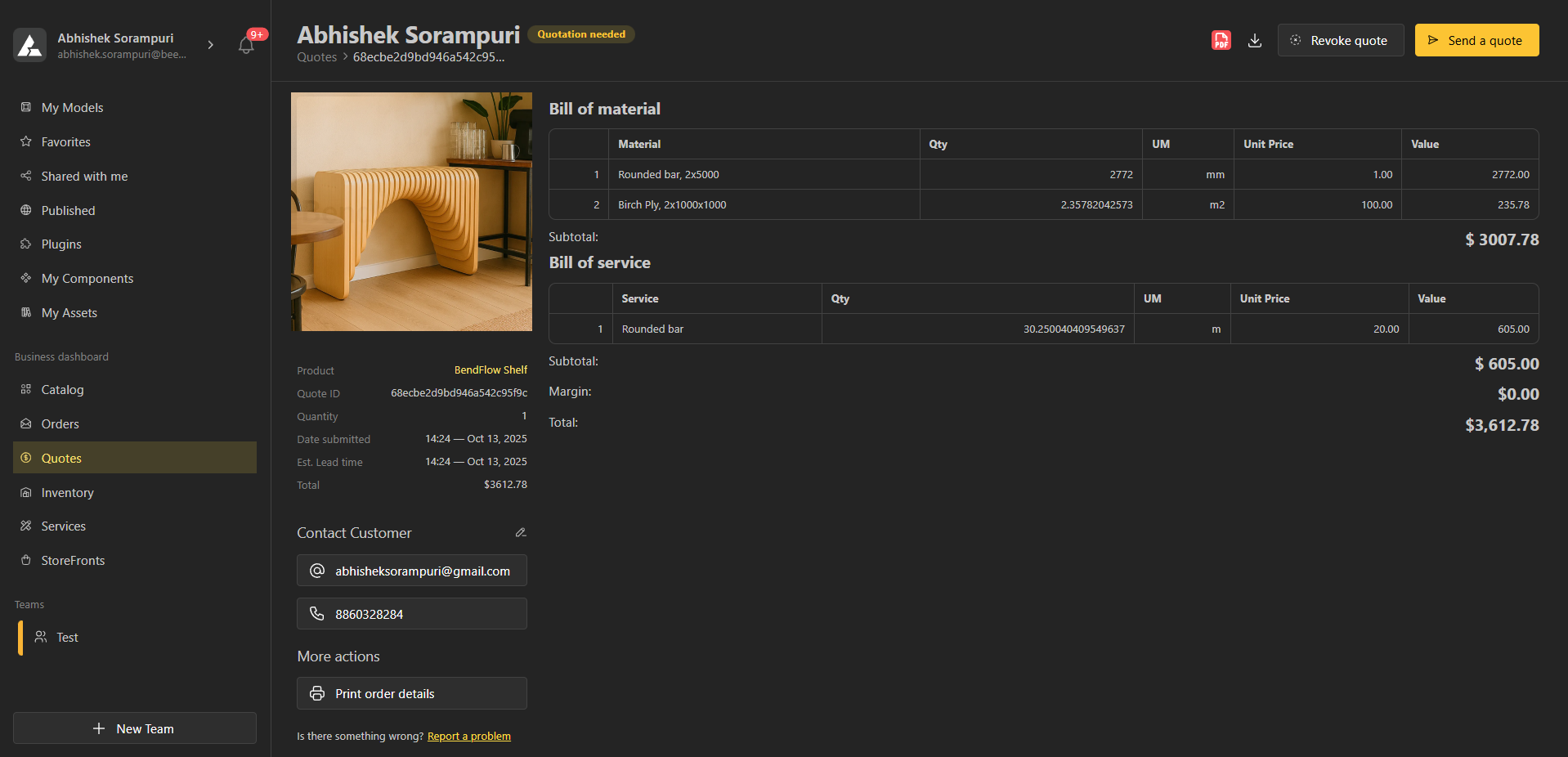
BeeGraphy Business Node Updates
We have enhanced BeeGraphy with a new suite of business-oriented nodes and an improved dashboard that together bridge design, data, and production management. These updates introduce seamless tools for material assignment, service integration, and automated costing, enabling real-time project quotations directly within the BeeGraphy dashboard
1. Material Nodes
These material nodes connect geometry with real-world fabrication logic, enabling precise profile definition, dynamic material generation, and data-rich insights for smarter, more efficient design workflows.
- Material: These nodes define the visual and physical appearance of materials by controlling texture maps, color properties, and fabrication-ready representation.
- Linear Nodes: These nodes generate material types that follow a defined axis or path, such as rods, beams, or flat extrusions. They establish the foundation for parametric fabrication materials used in construction and manufacturing.
- Count Nodes: These nodes manage quantity-based materials or components, allowing control over repetitive elements and batch manufacturing data. They help translate design repetition into quantifiable outputs.
- Sheet Nodes: These nodes represent planar or layered materials like panels, plates, or laminated composites. They support operations involving area-based fabrication or surface modeling with material intelligence.
- Volumetric Nodes: These nodes define 3D material entities calculated by volume, making them useful for modeling mass, density, or fill-based manufacturing materials.
- Weight Nodes: These nodes calculate or assign mass-related attributes to materials, enabling performance evaluation and cost estimation. They integrate physical realism into design workflows.

2. Material Nodes -2
These material nodes connect geometry with real-world fabrication logic – enabling precise profile definition, dynamic material generation, and data-rich insights for smarter, more efficient design workflows.
- Profile Nodes: These nodes define and shape structural profiles used as the foundation for material generation and assembly. They form the base geometry for linear, planar, or volumetric elements, enabling precision in how materials are represented and fabricated.
- Factory Nodes: Factory nodes act as generators that produce complete material objects or assemblies based on defined profiles and parameters. They enable dynamic material creation and customization directly within computational workflows.
- Deconstruct Nodes: These nodes analyze and extract data from existing material definitions—breaking them into measurable attributes like length, weight, and price. They provide insight for optimization, reporting, and data-driven decision-making.
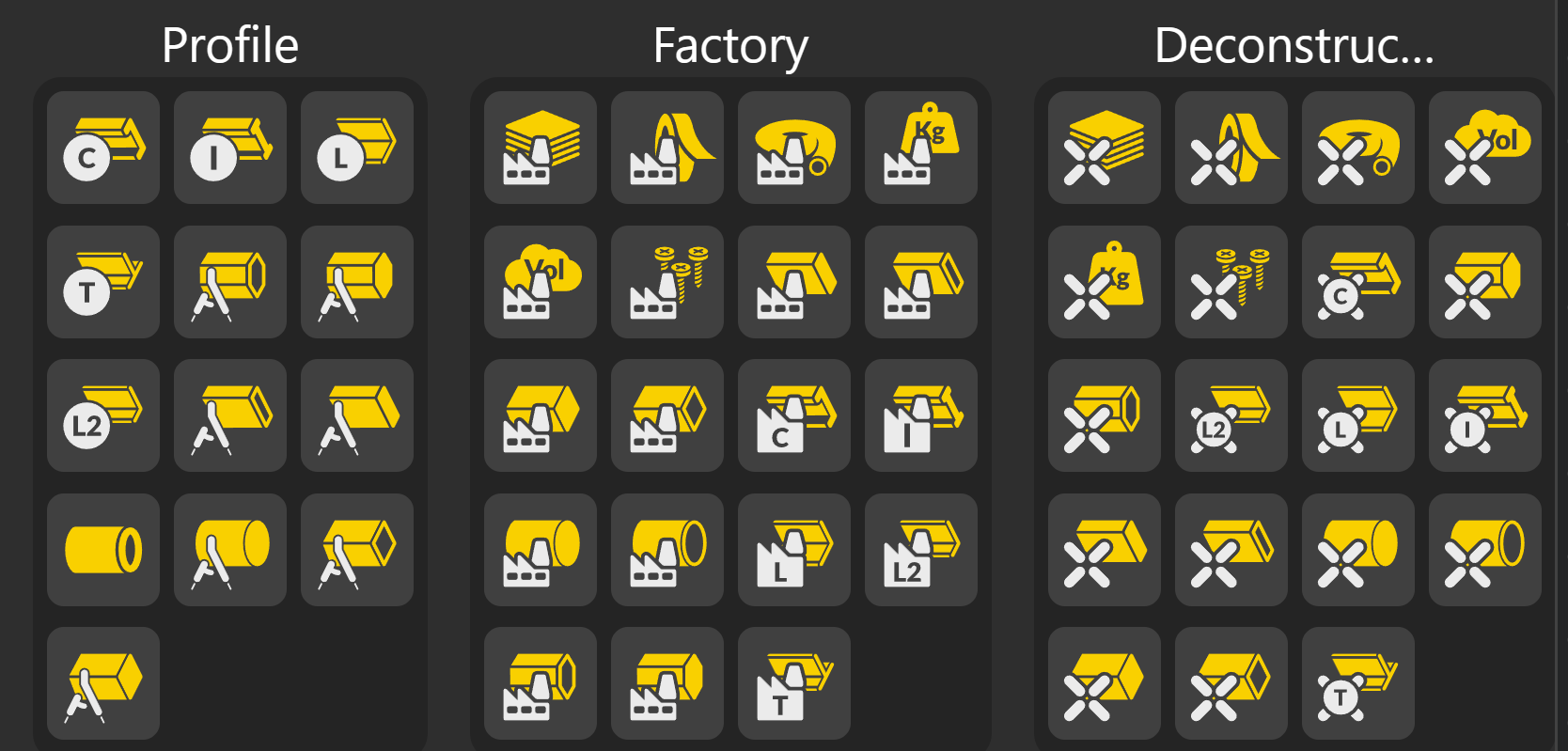
3. Service and Quotation Nodes: Connecting Design to Real-World Production
This set of nodes bridges the gap between parametric design and fabrication economics. By linking materials, service nodes, and geometry, designers can automatically generate production-ready data such as Bills of Material (BOM) and Bills of Service (BOS). Together, these tools transform BeeGraphy from a modeling platform into a complete design-to-quotation system—streamlining estimation, pricing, and manufacturing workflows with real-time accuracy.
- Service Nodes: These nodes define cost relationships between materials and measurable parameters such as count, length, area, volume, weight, or time. Each node automatically links production or fabrication services—like CNC cutting or welding—to the corresponding material data.
- Material Assign: This node connects geometry with material data, linking design models directly to inventory and fabrication workflows. By assigning materials parametrically, it ensures that every modeled component carries information about cost, weight, and processing requirements.
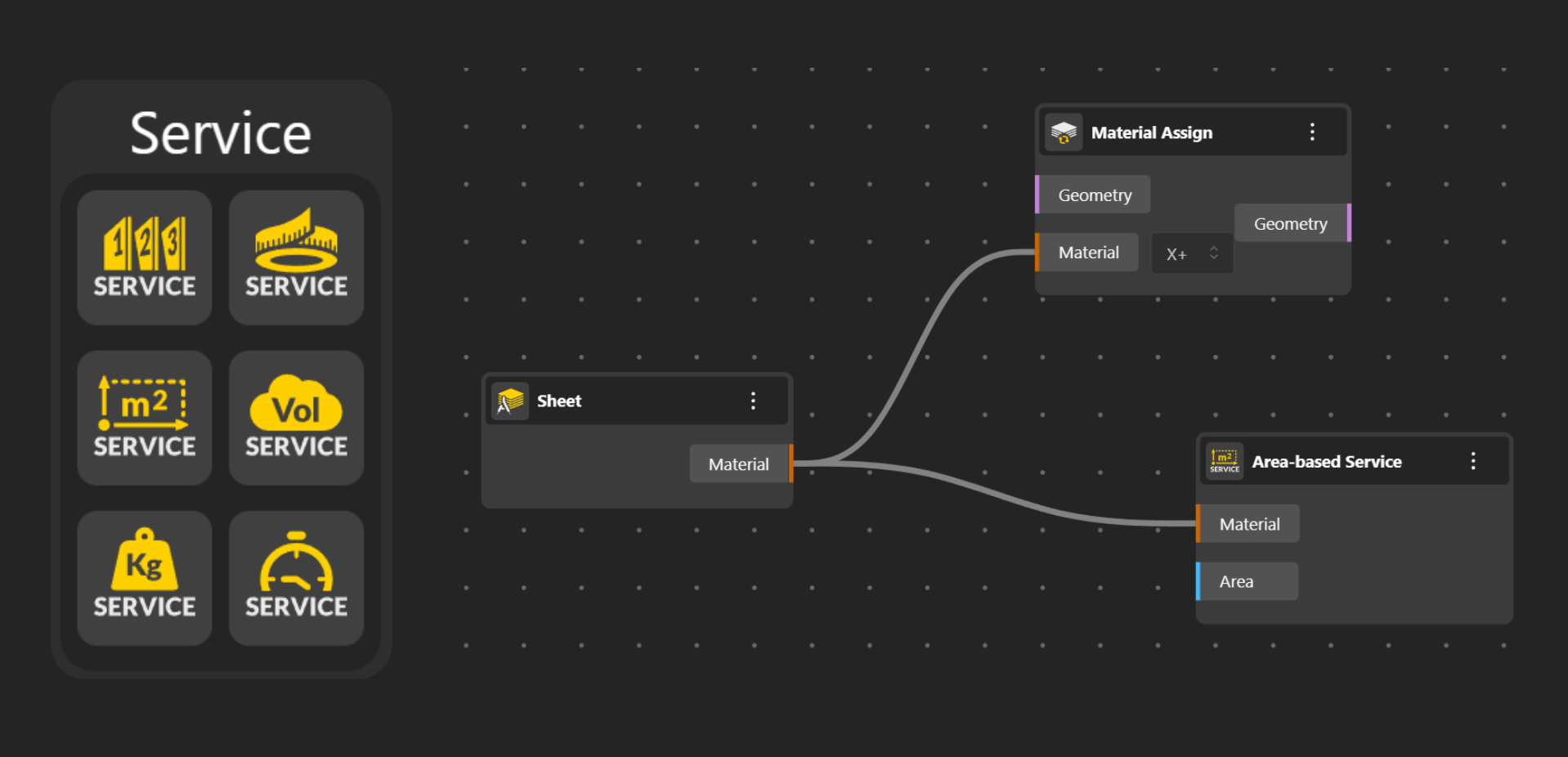
Additional Improvements and Enhancements
-
Performance Optimization: The core algorithm has been refined for faster computation and smoother performance across complex parametric definitions.
-
Orthographic View Mode: Users can now switch seamlessly between perspective and orthographic views, enabling more precise visualization and modeling control.
-
Enhanced Plugin Manager UI: The BeeGraphy Plugin Manager now features an improved interface with intuitive search and filter options, making it easier to discover and manage plugins.
-
Uniform Material Texturing: Materials and textures are now applied consistently across all faces of a geometry, ensuring cleaner visuals and more accurate material representation.
- Task Loader: Added a new task loader at the bottom-right corner that displays ongoing and completed operations.

That’s a wrap for this update!
Next, we will be releasing detailed tutorials and workflows in the coming days for each of these updates. These will help you better understand the key use cases and how to apply them effectively. Follow us on our social media channels and YouTube to stay up to date on the latest tutorials.
We’re also developing features that will allow manufacturers to leverage Beegraphy’s parametric models as product configurators. Once complete, manufacturers will be able to sell customized products on platforms like WordPress, Shopify, Squarespace, and Etsy, as well as directly offer tailored finished items on Beegraphy Market. While this development process will take some time, we’ve chosen to share our progress in this update to invite your exploration and feedback.
We invite you to try out these new features, share your designs with the community, and send us feedback to help make BeeGraphy even better and more useful for everyone. Don’t forget to follow us on our socials and join our Discord community!


